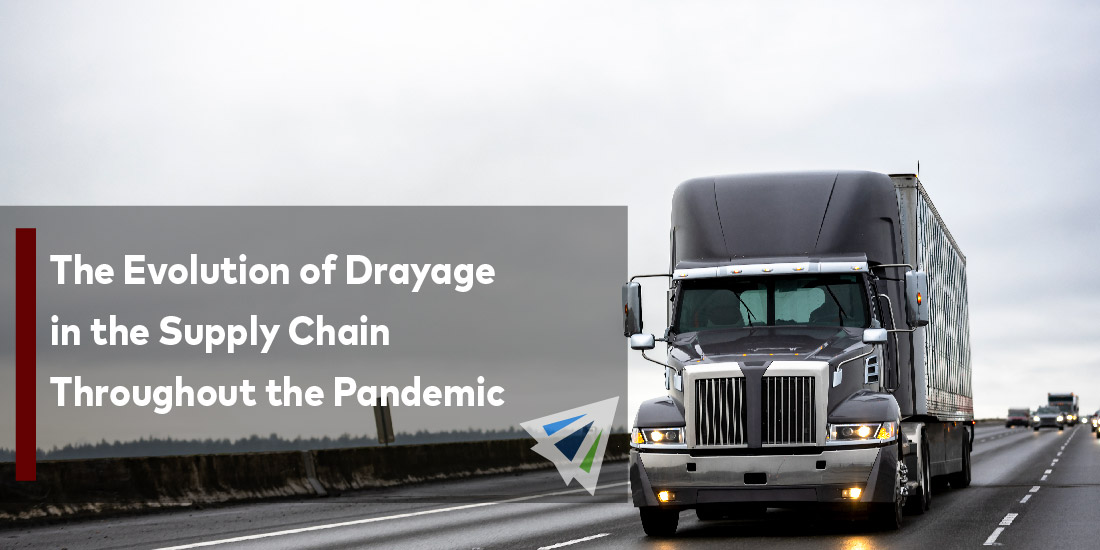The Evolution of Drayage in the Supply Chain Throughout the Pandemic
The pandemic amplified issues that were already a part of the shipping industry: manageable congestion at ports skyrocketed out of control; minor equipment shortages were magnified tenfold; and already rising freight rates got even more expensive. It really brought out the worst in everything.
But as we all know, the industry is incredibly dynamic. Things change, and if you want to continue shipping your goods efficiently, effectively, and at a good price, you’ll need to adaptive. While many companies have regarded drayage and intermodal as afterthoughts, they’re almost required nowadays to survive. The industry changes constantly.
Planning in Advance
The pandemic taught everyone in the shipping industry that there is no place for procrastination. With the insane amount of congestion at ports, high freight rates, low passenger aircraft shipping availability, equipment shortages, and labor shortages, we all had to come to terms with the fact that waiting to book a shipment will directly translate to a higher overall cost and late arrival.
Planning in advance goes a long way. What does that mean? Get all supply chain details such as chassis availability, yard space, pallets, and drayage drivers lined up far before the container arrives at its destination port.
The sudden shift in supply and demand for shipping equipment, and even labor shortages, can largely be attributed to changes in consumer buying behavior. Shortly after the pandemic first struck, online sales skyrocketed in a way the supply chain industry at large was not yet prepared to handle.
Usually, eCommerce activity is expected to rise at roughly 1 percent every year. Even that 1 percent climb translates to an enormous number of extra shipments each year, which carriers and ports have to account for as they adjust their processes, hire employees, and allocate equipment. However, between the second quarter of 2019 and the second quarter of 2020, that number soared from 10.8 percent to 16.1 percent—an astronomical growth in eCommerce activity.
By the fourth quarter of 2021, that number had dropped to 14.5 percent, but still remains drastically higher than any carrier, port, manufacturer, retailer, or 3PL was expecting.
The bummer with this rise in eCommerce activity is the shift in consumer expectations. Everyone wants things faster than ever before for cheaper than ever before, and those expectations are putting undue pressure on several aspects of the shipping industry.
For example, inland intermodal transit usually creates a 30-day cycle for containers to get from the port of Los Angeles to Cincinnati and back. That unfortunately is no longer sustainable at the current demand levels.
Businesses absolutely need to include drayage, transloading, and trucking into their processes or they will face serious difficulties in their supply chains. The processes around lining up drayage will look significantly different this year than previous years, and it would be a mistake to approach it the same as during pre-pandemic times.
Many companies are still waiting for cargo to arrive on U.S. soil before notifying a drayman it needs to be picked up, and unfortunately, they pay the consequence for it. Drayage nowadays needs to be planned far in advance to cargo arriving at its destination port.
Planning in today’s shipping market can be really confusing. There are tons of options for how to get your cargo from point A to point B, but most are incredibly risky, costly, and complicated. It’s important to work with a strategic freight forwarder that can take your specific case, listen to your process, offer advice, and craft an actual solution that is custom tailored to your business’ exact needs.
If you’re interested in starting a conversation like this, please don’t hesitate to reach out to one of our team members! We would love to hear about your current shipping processes and help devise a strategic approach to reducing your shipping costs and increasing your company’s efficiency. In addition, we have our weekly market updates that provide relevant freight news, updates, and developments across the industry.
